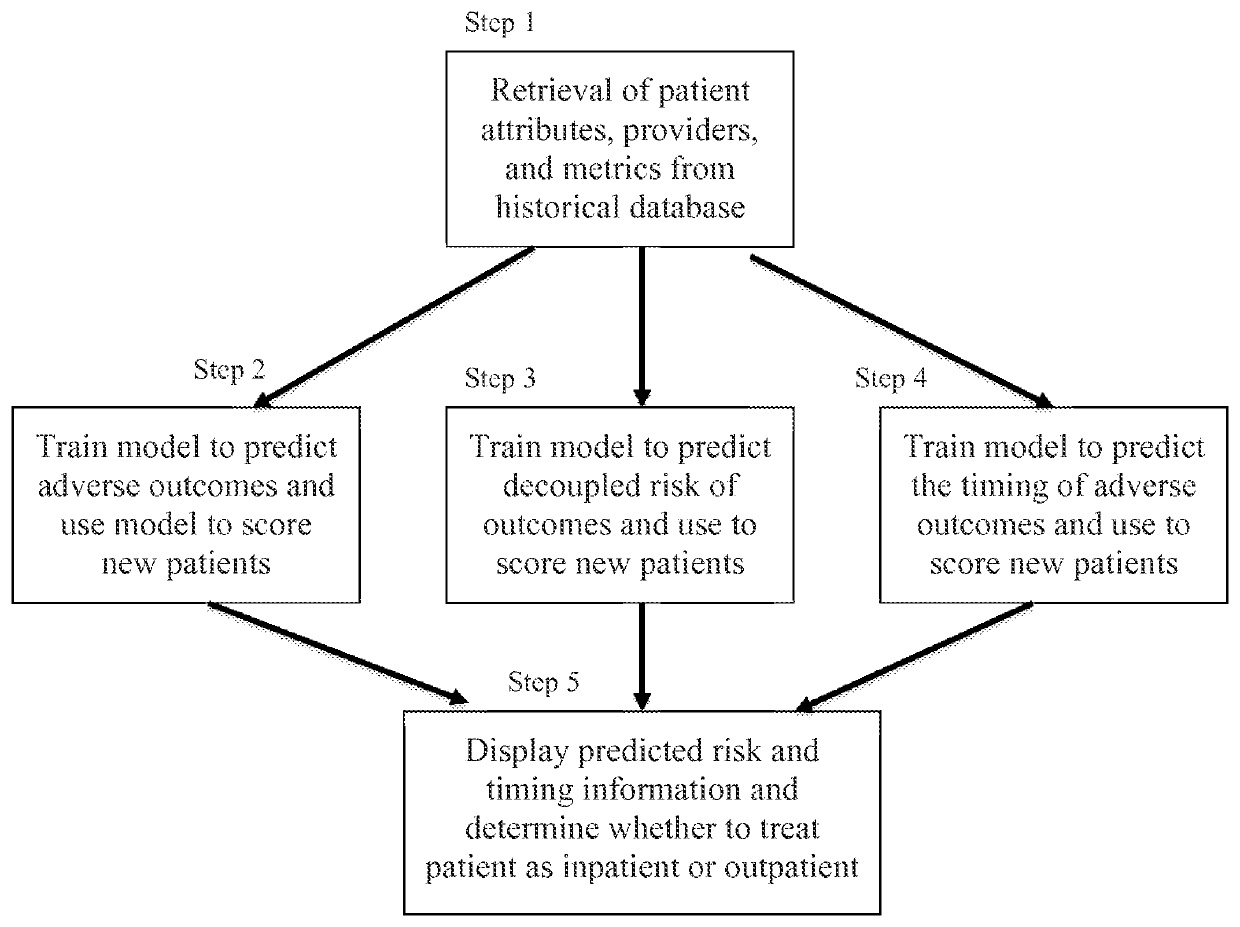System to determine inpatient or outpatient care and inform decisions about patient care
a technology for inpatient or outpatient care and decision-making, applied in the field of system-based decision-making for inpatient or outpatient care and inform decision-making for patient care, can solve problems such as inability to assum
- Summary
- Abstract
- Description
- Claims
- Application Information
AI Technical Summary
Benefits of technology
Problems solved by technology
Method used
Image
Examples
Embodiment Construction
[0014]FIG. 1 illustrates a flow diagram of the invention. The steps shown are described below in more detail.
[0015]STEP 1: We start out with historical case records in a database. We associate with each case previously treated in either an inpatient or outpatient setting a plurality of attributes based on but not limited to the patient's demographics (e.g., age, gender); history (e.g., prior myocardial infarction) and physical exam findings (e.g., edema around the ankles); comorbidities (e.g., hypertension); laboratory reports (e.g., high troponin levels; low ejection fraction); admission type (e.g., transfer from another hospital, elective admission); and insurance (e.g., Medicare). We denote such a vector of case attributes associated with each patient as xi where i=1 . . . N for a total of N patients in the database and xi(j) is the value of the j-th attribute for case i out of a total of d possible attributes. We also associate with each case a scalar indicator si ∈ {0,1} that i...
PUM
 Login to View More
Login to View More Abstract
Description
Claims
Application Information
 Login to View More
Login to View More - R&D
- Intellectual Property
- Life Sciences
- Materials
- Tech Scout
- Unparalleled Data Quality
- Higher Quality Content
- 60% Fewer Hallucinations
Browse by: Latest US Patents, China's latest patents, Technical Efficacy Thesaurus, Application Domain, Technology Topic, Popular Technical Reports.
© 2025 PatSnap. All rights reserved.Legal|Privacy policy|Modern Slavery Act Transparency Statement|Sitemap|About US| Contact US: help@patsnap.com

